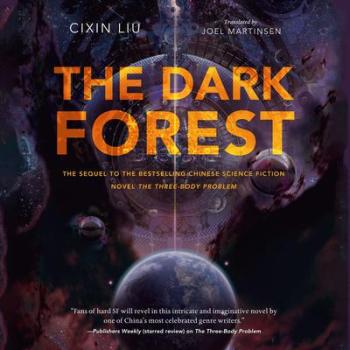 I had a chance to preview the new Apple TV series Prehistoric Planet and it is really impressive in all respects – scientifically, visually, and musically. The narration by David Attenborough is wonderful, but precisely what you might expect in a series reenacting the age of the dinosaurs. On the other hand, how often do you get to see a documentary with soundtrack by Hans Zimmer? Perhaps the key to understanding how a documentary can be so much like a motion picture or top streaming series is knowing that the filmmaker behind Prehistoric Planet is none other than Jon Favreau who has worked on Marvel films and of course is the mastermind who brought us The Mandalorian. Most relevant in this case, however, is perhaps his work on the CGI “live action” version of The Lion King, which I honestly had forgotten was one of his films until after I watched Prehistoric Planet. When I was reminded of this, it all made sense. Since in Prehistoric Planet the dinosaurs don’t need to talk to one another or act as they did in the animated original, a greater degree of realism is possible even though we can observe lions and hyenas but not a tyrannosaurus rex.
I had a chance to preview the new Apple TV series Prehistoric Planet and it is really impressive in all respects – scientifically, visually, and musically. The narration by David Attenborough is wonderful, but precisely what you might expect in a series reenacting the age of the dinosaurs. On the other hand, how often do you get to see a documentary with soundtrack by Hans Zimmer? Perhaps the key to understanding how a documentary can be so much like a motion picture or top streaming series is knowing that the filmmaker behind Prehistoric Planet is none other than Jon Favreau who has worked on Marvel films and of course is the mastermind who brought us The Mandalorian. Most relevant in this case, however, is perhaps his work on the CGI “live action” version of The Lion King, which I honestly had forgotten was one of his films until after I watched Prehistoric Planet. When I was reminded of this, it all made sense. Since in Prehistoric Planet the dinosaurs don’t need to talk to one another or act as they did in the animated original, a greater degree of realism is possible even though we can observe lions and hyenas but not a tyrannosaurus rex.
The series uses CGI to recreate the prehistoric world of the dinosaurs as realistically as possible. In an era of science denial, when deepfakes and related technology can lead to falsehoods going viral and gaining widespread credence, it is so refreshing to see such time, effort, and artistry go into promoting accurate information about science and history. The first episode focuses on coasts and that setting provides an opportunity to learn about dinosaurs that flew and ones that swam, how they reproduced and how they fed. The second episode turns to a very different environment, the desert. For those whose favorite dinosaurs are the ones that tower above the ground, this episode devotes much of its time to them. Episode three focuses on freshwater and follows a river and the dinosaurs that live, mate, and feed in and near it. Episode four takes us to colder climates, although despite its title being “Ice Worlds” it isn’t focused exclusively on places that are consistently cold. The fifth episode focuses on forests and of course this gives a chance to see some of those beloved long-necked herbivores in action, as well as triceratops and others that those of us who grew up avidly reading books about dinosaurs will be particularly eager to see. The end of that episode brings us full circle to a beach and the archaeopteryx with which we began. The show as a whole strikes an impressive balance between giving us a chance to see dinosaurs as we’ve come to think of them in action, as well as dinosaurs as scientists have increasingly come to understand them, with things like feathers that the books from my childhood lacked. All of these genuinely seem to interact with one another and to look at us. While CGI never achieves full realism, it was genuinely possible to forget at times that I was watching something more akin to science fiction special effects than traditional documentary filmmaking.
If anyone wonders about the appropriateness of a documentary using CGI special effects to make the past seem present, this is part of a long history, something museums have always done. The dinosaur skeletons on display were rarely found as complete as the form in which they were displayed. Plaster casts fill in the rest. In the same way if you go to the Shrine of the Book at the Israel Museum most of the larger Dead Sea Scrolls you’ll see on display are facsimiles. I am focusing on this point because, as an educator who has tried to engage in public scholarship to combat misinformation, I know too well that fakers and fraudsters, denialists and charlatans, have no qualms about fabricating supposed evidence for things that have never happened. Yet some may criticize those who promote scientific knowledge for using cutting-edge technology to convey accurate historical information. This effort is something to be applauded rather than criticized. And it is not just well done, but remarkably impressive.
Prehistoric Planet premiers May 23rd on Apple+TV. Check out the trailer below and I think you’ll see immediately why I give it such a wholehearted recommendation.

















